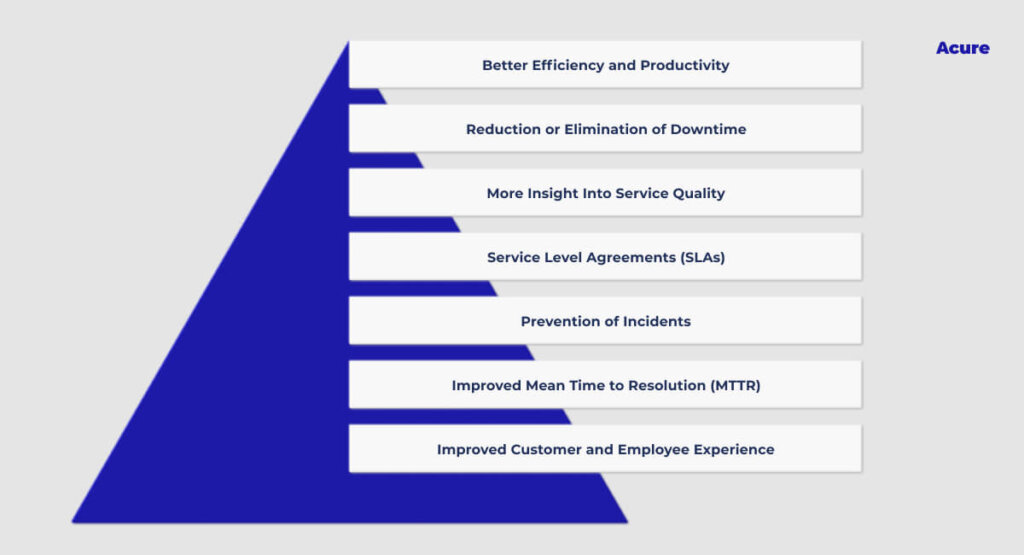Though technology is incredible, it is not without limitations. Even slight network line disruptions can halt a project in its tracks and, in the worst cases, undo all the hard effort that went into it.
So, let us begin by learning what is incident management and how advantageous it is to IT firms.
What Is an Incident?

Before we get started on what is incident management, let’s learn what this ‘incident’ is all about.
An incident is described as “an unanticipated disturbance, or impending disruption, to an IT service” by the Information Technology Infrastructure Library (ITIL).
In simpler terms, an incident refers to unforeseen performance lags that appear out of nowhere without any reason when working with the software.
A common example is when social media platforms suddenly crash, depriving users of using or viewing the services. One such incident is the 2021 Facebook outage, which caused Facebook and its subsidiaries Instagram, Whatsapp, and Messenger to become unavailable worldwide for six to seven hours.
The underlying reason for an incident might range from simple, such as a server failure, to extreme, such as cyberattacks. Whatever the issue may be, firms invest in a comprehensive plan to ensure that unforeseen incidents do not hinder users, known as Incident Management.
What Is Incident Management?

Incident Management, a component of IT service management (ITSM), is the process of swiftly identifying and correcting IT incidents without causing any hindrance to the software performance or restoring the services to their normal state while minimizing the impact on the business.
Even if they are infrequent, service interruptions or incidents cost a fortune and harm your services’ reputation. Because of this, businesses use incident management procedures to stop incidents from happening and lessen their consequences.
IT teams generally use regular software updates, event monitoring, and other procedures to prevent incidents. Moreover, if a software application were to experience an incident, the program would already have a plan to deal with it promptly and determine the source of the incident to avoid it recurring.
Let’s examine the phases of incident management and how they might assist firms in reducing damaging downtime now that we are fairly clear on what incidents and incident management are.
What Are the Steps to Incident Management?
Incident management has a streamlined workflow that skillfully evades the negative impacts that incident management may cause.

To handle incidents in a way that meets the needs of customers and relevant stakeholders, your IT team will perform a variety of activities, generally in this order:
1. Detect the Incident
The incident is first detected. Incident detection usually happens in the following ways,
- Either a user reports an issue or lag in the performance of the service
- Or, the service provider identifies an incident from alerts or trends from the components used to provide the service.
2. Log the Incident
After the incident has been alerted, the service provider logs the incident. Smaller incidents can be logged without triggering an alert, while serious incidents trigger an alert, and the handler handles the necessary procedures.
3. Classify the Incident
Then the incident is classified into proper categories and subcategories so they can be properly addressed.
The service provider categorizes the incidents in terms of,
- Type
- Impact, as in who and what is affected
- Urgency, or the speed required for resolution
- The priority of business and customer perspectives
4. Diagnose the Incident
After classifying the problem, the IT team investigates its causes, potential solutions, and tools for doing so. The handler receives the solution later, and they resolve it.
For complicated situations, the analysis may require additional time and participation from different IT teams, or “swarms,” to perform a joint investigation and develop appropriate remedies.
5. Resolve the Incident
Event resolution is handling an incident after a resolution is reached and implemented. Resolution of incidents can be
- Automatically implemented
- Documented so that the end-user can utilize it on their own.
- Handled by the support crew
- Sent to a unit with more experience or perhaps the vendor
However, not always the solution can resolve the incident; if that’s the case, the previous step is repeated.
6. Close the Incident
After the incident is resolved, a formal incident closure will be followed. Closure might require:
- Letting customers know that the service experience is common and getting their confirmation.
- Accounting for managing tasks
- Updating configuration data as necessary
Following the aforementioned procedures, a final review meeting known as an incident review or postmortem will be held where IT teams will discuss the causes and consequences of the events and the actions that were done to address them. The creation of solutions to stop and handle upcoming accidents is ensured at this final step, which also discusses potential improvements.
The Importance of Incident Management
Incidents are quite a headache to organizations. They disrupt the performance of their services which can contribute to massive losses in data, productivity, performance, and money.
This is why major firms and startups are taking extra measures to employ incident management services.

The advantages of adhering to incident management protocols are listed below:
Better Efficiency and Productivity
Adhering to a proper incident management approach could mitigate any future unanticipated incidents using the methods already in place. Enabling the provision of a faultless performance for users.
Reduction or Elimination of Downtime
Incidents can result in downtime, which can undermine the company’s reputation over time. A future incident can be prevented through well-documented incident management procedures, helping to minimize or eliminate any downtime that results from an incident.
More Insight Into Service Quality
Incidents can be recorded in incident management software, which offers insight into service time, incident severity, and whether certain incidents are recurring and may require mitigation. The software can then produce reports at this point for analysis and visibility.
Service Level Agreements (SLAs)
Systems for incident management aid in developing procedures that provide light on SLA and whether or not they are being met.
Prevention of Incidents
After events are discovered and minimized, knowledge of them and the required solutions can be applied to prevent or quickly resolve similar incidents in the future.

Improved Mean Time to Resolution (MTTR)
When processes are recorded and data from prior occurrences are available, the average time to resolution is reduced. Eliminate bottlenecks by accelerating incident resolution with machine learning and contextual assistance. Integration of AIOps speeds up noise reduction, prioritization, and remediation by reducing incidents and mean time to resolution (MTTR).
Improved Customer and Employee Experience
A product or service will reflect a company’s efficient internal processes. If businesses do not endure downtime or a loss in services as a result of an incident, customers will have a better experience. Similarly, offering omnichannel choices enable employees to contact support to track and resolve incidents. Employees can submit incidents using self-service portals, chatbots, email, phone, or mobile.
The Bottom Line
Organizations are at an unprecedented level of danger due to the increasingly complex IT environments and the numerous, sophisticated threats. By allowing you to identify and address events more rapidly, incident management enables you to reduce that risk.
While outages and other occurrences are unavoidable in any industry, incident management is the most efficient approach to respond quickly and avoid expensive downtime that could endanger your company’s reputation and financial health.





